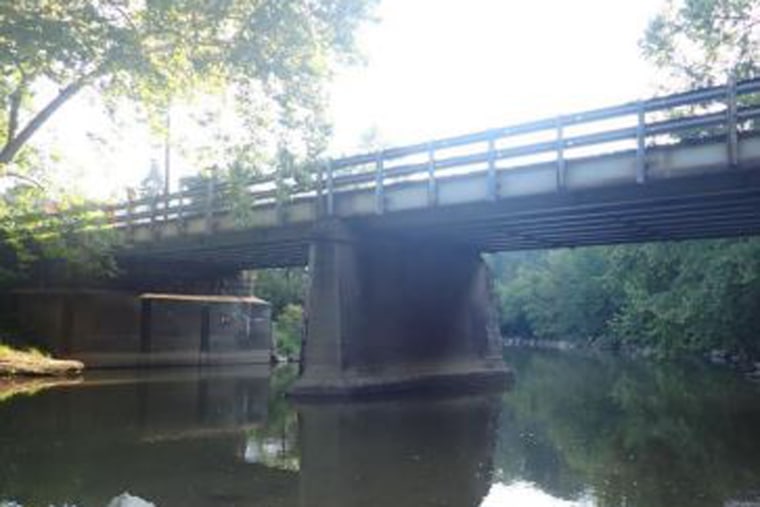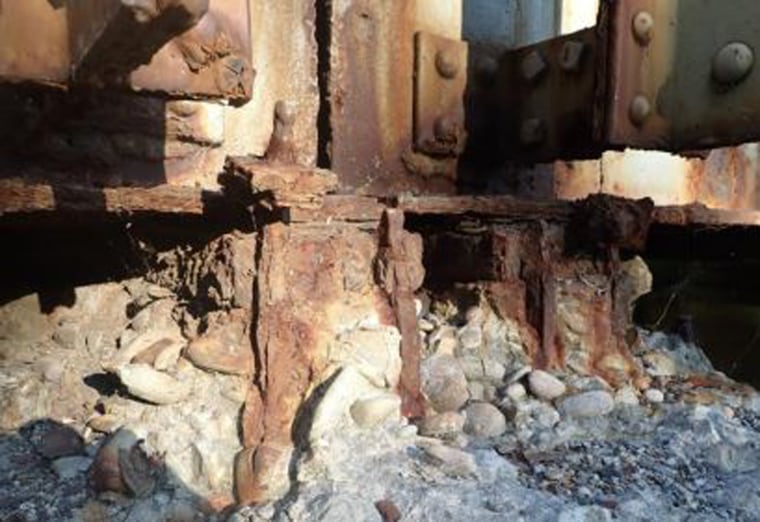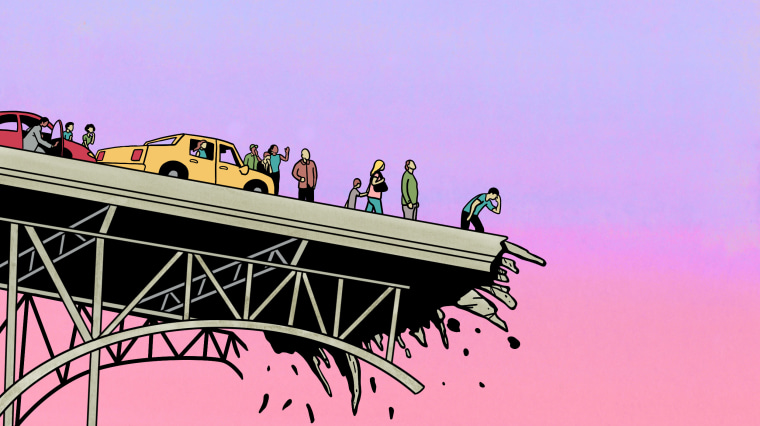President Joe Biden wants to go big with his infrastructure plan. But a look at the state of America’s bridges shows he may not be going big enough.
Biden’s plan would repair 10,000 of the nation’s smaller bridges, along with 10 of the most economically significant ones. But an NBC News analysis of data from the Federal Highway Administration found that more than 35,000 of the nation’s smallest bridges, those with two lanes or less, have been rated in need of repair in their most recent inspection.
Biden announced his $2 trillion infrastructure plan in March, which among other things proposed rebuilding 20,000 miles of the nation’s roads, along with the bridges. The plan did not detail which bridges would meet the criteria for repair.
Almost 4 out of 5 poorly rated bridges in the NBC News analysis are small bridges in rural communities, showing the wide impact the spending plan is likely to have in areas far from big cities.
The Department of Transportation did not directly address the gap between the 35,000 structurally deficient small bridges and the plan to repair 10,000 of them, but a spokesperson emphasized that the country has been making progress. In an email to NBC News, the spokesperson said that deficient bridges make up 7.5 percent of the country’s inventory, down from 12.1 percent a decade ago. The department said that details on how the funding for bridges would be administered will be worked out with Congress, but it is expected that a portion of the funds would flow through existing programs and authorities, in addition to new grant programs.
Iowa, Pennsylvania and West Virginia lead the nation with the highest number of structurally deficient rural bridges, according to an analysis of the nation’s bridge inventory database from the Federal Highway Administration. Experts say those and other largely rural states and counties don’t have the budgets for the necessary repairs.
The country faces a trillion-dollar backlog of needed repairs and improvements, according to the agency.
That backlog includes the Route 1011 bridge in Greene County, Pennsylvania. The bridge, built more than 70 years ago, runs over South Fork Tenmile Creek in the southwestern part of the state. The structure of the bridge has deteriorated so much that weight limits were imposed.

Across Pennsylvania, there are more than 2,000 rural bridges in poor shape. Alexis Campbell, press secretary for the state’s department of transportation, said in an email that Pennsylvania has $9.3 billion in unmet needs.
“These bridges are not unsafe, but they need significant repairs or replacement,” she said. “We have over 25,400 state-owned bridges, the third-highest number in the country.”

Many of Pennsylvania’s bridges also have to be modernized to account for post-industrial needs. That's the case with the Karns Crossing Bridge in Butler County, a large,12-span bridge that runs over several rail lines. Because it was built in 1937, it doesn’t meet current height requirements that call for 23 feet of clearance, which would allow for double-stack trains underneath the bridge.
“Because there hasn’t been a significant increase in federal investment, we’ve been forced to redirect more state funds away from regional projects to the interstate network,” Campbell wrote.
She said the reconstruction cost for the Karns Crossing Bridge is estimated at $44 million.
For some communities, these bridges can be the only access point for miles — a situation acutely felt in Mississippi in 2018, when the state had to close more than 500 bridges because they were aging, had splintered supports or cracked concrete. Those closures left residents scrambling to find alternative routes.
Many of the country’s bridges were built after President Dwight Eisenhower initiated the Interstate Highway System by signing the Federal-Aid Highway Act of 1956.
“What we've seen is that the trend of bridges that are classified in poor condition have been slowly going down. But at the same time, the number of bridges in good condition, which is the opposite side, has also been decreasing,” said Alison Black, senior vice president and chief economist at the American Road and Transportation Builders Association, which represents the construction industry.
“So we're getting this bubble in the middle of bridges that are in fair condition,” she added. “States are trying to do the best they can, but they might be making minor repairs, where they really need to make more major investments to rehabilitate a bridge. There needs to be systematic investment.”
Those investments are sorely needed in Iowa, where the state has more than 4,400 small, rural bridges rated “structurally deficient,” meaning the bridge has advanced section loss or deterioration. Bridges in that condition will often be closed to traffic once they reach a critical stage.
“Usually, the bridges that are in poor condition have less than 10 years of estimated remaining life,” Mark Nahra, president of the Iowa County Engineers Association, said. He is the engineer for Woodbury County and has worked on Iowa bridges since 1984.
Nahra said many of the rural bridges are 50 to 60 years old, and many have weight restrictions and structural defects. He said current bridges have a 50-year design life, while newer bridges, built with coated steel and without exposed wood elements, are expected to remain in good condition for 75 to 100 years.
“Our old generation of bridges were typically anywhere from 16 to 24 feet wide. The new generation of bridges we're building, you're 30 feet wide, primarily to accommodate the agricultural equipment that's going down the road today,” he said.
According to the latest data, Iowa has more than 300 bridges in failed condition, meaning they are closed. That’s the most in the country.
“Demand for bridge maintenance and bridge replacements to keep all bridges in good or fair condition has exceeded the funding available,” said Andrea Henry, director of strategic communications for Iowa’s Department of Transportation.
“The state of Iowa passed a fuel tax increase in 2015 that has been used to increase investment in Iowa’s transportation system and that includes repair and replacement of poor bridges,” Henry said.
Federal dollars would be a much-needed boost to state and local budgets that took economic hits because of the pandemic, experts say.
“We don't know how the Biden administration's plan will work, whether that will be discretionary and what part would be formula funds, there's a lot of unknowns there. But certainly, any level of additional investment would be welcome, I think to help address some of the issues,” said. Black of the American Road and Transportation Builders Association.
“When we get the question about what bridges would qualify for the Biden administration's plan, that's so challenging,” she said. “I always tell people that that local bridge is important to that community, it may not be the Brooklyn Bridge, but for that area, it is important.”
